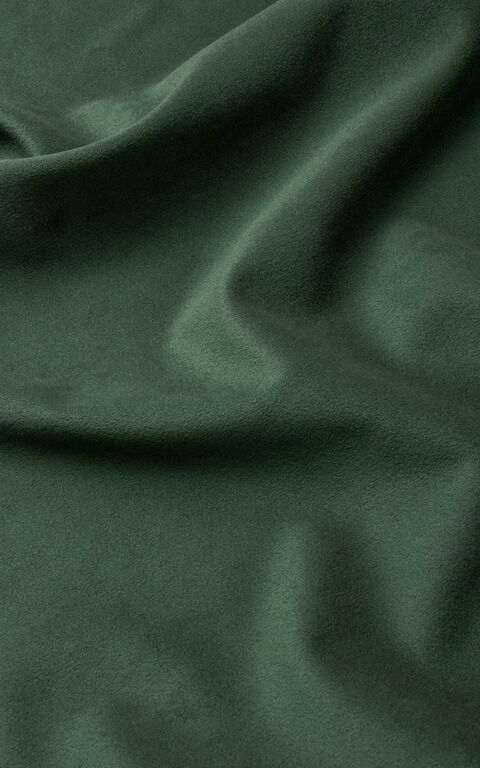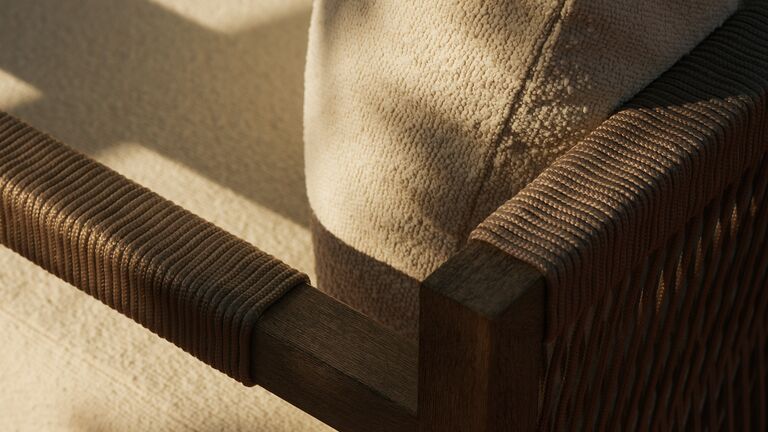Best fabric for outdoor upholstery: Acrylic or Fiqa Polyester?
In the outdoor textile world, three main materials dominate: Polypropylene (PP), Acrylic (AC), and Polyester (PES). For years, acrylic has positioned itself as the premium choice, but in today’s market, where durability, ease of maintenance, environmental impact, and mechanical strength are non-negotiable, high-performance alternatives are taking the lead.
At Fiqa, we’ve taken a different path. We believe that high-performance, solution-dyed polyester offers a smarter, more future-ready alternative — both technically and environmentally. Here's why:
5 key differences
1. Maintenance & Washability
Acrylic fabrics degrade faster with repeated washing, especially at higher temperatures. In high-use settings like hospitality lounges, outdoor cushions, or public seating, where removable covers require frequent cleaning, this becomes a real issue.
Fiqa's innovative solution — dyed continuous filament polyester handles regular washing effortlessly. Our fabrics are machine-washable up to 60°C and tumble-dryable, offering a clear advantage for spaces where hygiene, longevity, and visual consistency matter.
2. Abrasion Resistance & Surface Durability
Although acrylic offers reasonable abrasion resistance at first, it tends to lose strength faster over time, especially as spun fibers loosen and flatten with heavy use. Fiqa Polyester, by contrast, maintains surface integrity thanks to its continuous filament yarns. These fibers are stronger, smoother, and more resistant to flattening and pilling. In long-term use, polyester simply outlasts acrylic.
3. Mechanical Strength & Shape Retention
Made from spun yarns, acrylic fabrics are prone to untwisting and weakening over time, causing sagging, loss of tear strength, and a shape that doesn’t hold up after prolonged use.
4. Environmental Impact:
Acrylic is non-biodegradable, hard to recycle, and sheds more microfibers during washing as environmental standards tighten. It also produces more toxic smoke when burned (including hydrogen cyanide), posing challenges in regulated environments. In contrast, polyester is easier to recycle, sheds fewer microfibers (especially in filament form), and aligns better with circular economy environmental goals.
5. End-of-Life & Circularity
As Europe and other regions increase sustainability demands in tenders and specifications, end-of-life recyclability is becoming essential. Acrylic lacks a viable recycling infrastructure, making it less future-proof. Polyester, on the other hand, is far more compatible with circular design strategies, from chemical recycling to closed-loop programs.



Why we choose Polyester
Instead of following the traditional path, we invested in the next generation of performance textiles — creating a solution-dyed, continuous filament polyester that outperforms in every way.
1. Deep-Color Durability:
In solution-dyed PES, the color is locked into the fiber itself, not just applied on the surface. This ensures deep, lasting color that resists UV degradation.
In Fiqa’s solution-dyed PES, the color is locked into the fiber itself. Partnering with best-in-class experts, we’ve created what we believe is the most advanced PES yarn on the market today.
2. Stronger from the Inside Out
Fiqa uses continuous filament yarns, where long, unbroken fibers are aligned and stretched during production. This results in:
- Exceptional tensile and tear strength
- High resistance to fraying and fiber breakage
- Superior dimensional stability
3. Tested, Proven, Trusted
We subject our fabrics to rigorous lab testing and real-world exposure, including rooftop UV tests in Shanghai. Each color is tested individually — not in generic light/dark categories — and only the best-performing shades make the final cut.